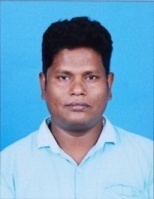Scientific Program
Keynote Session:
Title: Microbiota, immunology and vaccines to tackle antimicrobial resistance
Biography:
Ivana Haluskova Balter is a French Medical professional specialized in infectious diseases, internal medicine covering various therapeutic axes, certified in Immunology and Pediatric, MBA vaccinology and years of active clinical practice.Lived multi-country medical “field “experience in Southeast Asia (India in particular), West/Central/East Europe.
Abstract:
Bacteria, viruses, parasites and fungi that are resistant to drug cause 700,000 death each year. By 2050 superbugs inured to treatments could cause up to 10 million deaths annually and costs the global economy US$100 trillion.AMR(antimicrobial) resistance is regarded nowadays as a major threat to global public health. The issue is receiving high-level political attention (G7 and G20 in 2017 for first time). Pandemics, drug resistance and neglected diseases framing health as a “global security issue”.The list was drawn up in a bid to guide and promote research and development (R&D) of new antibiotics, as part of WHO’s efforts for AMR (27th Feb 2017)
Tuberculosis (MDR/XDR) and latent tuberculosis represent a major issue to tackle attracts global attention as witnessed by recent WHO and inter-ministerial meeting in November 2017 and high level UN meeting which have been hold in September 2018.Problem of resistance get worsened due declining number of new antibiotics and limited number of new classes. Antibiotic use influence composition of microbiota in each individual. Similar trends are seen in drug development and use for treatment of tuberculosis.
Title: Nanovaccines for infectious diseases delivered via microneedle patches
Biography:
Martin D Souza has obtained his PhD degree from the University of Pittsburgh, PA, USA. He is a Professor and Director of Graduate Programs in the College of Pharmacy at Mercer University in Atlanta, Georgia. He also serves as the Director of Mercer Clinical Laboratory and Co-Director of the Center for Drug Delivery Research. He has graduated over 50 PhD students and has published over 100 manuscripts. He has been the recipient of several research grants from the National Institutes of Health (NIH), the American Diabetes Association, the Georgia Cancer Coalition, and Georgia Research Alliance. He serves on several Editorial Boards and is a journal reviewer for over 10 scientific journals and has several patents issued in the area of Nanotechnology
Abstract:
The D'Souza Vaccine Nanotechnology Laboratory at Mercer's College of Pharmacy has been working on the design and delivery of microparticulate vaccines for cancer and infectious diseases. This presentation will highlight the triumphs and tribulations of this rather innovative, in-expensive and painless method of vaccine delivery using microneedle technology. Our patented technology is rather broad based and can be use to administer multiple vaccines using several routes such as oral; transdermal, including microneedle and laser ablation techniques. We have been working on particulate vaccines for 1] several cancer vaccines such as ovarian b) melanoma c) prostate and d) breast cancer vaccines; 2) vaccines for infectious diseases such as a) universal influenza, b) HPV, c) RSV, d) meningitis, e) gonorrhea, and f) measles vaccines. In this presentation, the results of these vaccine prototypes will be discussed. The vaccine antigen was formulated in bio-degradable and bio-compatible matrices to prepare nano particles or microparticles using a spray dryer. The results of these studies will be discussed.
Title: Perennial ryegrass and the resultant clinical staggers
Biography:
Morrie Craig is a graduate of the US Coast Guard and received his BS and PhD at Oregon State University. Before retiring in 2018, he spent 40 years at the College of Veterinary Medicine at Oregon State University and established the OSU Endophyte Service Laboratory. His focus of research has been on toxic plants, with characterization of chemical structure of their toxins and their effect on animal health.
Abstract:
Ergot causes disease due to a fungus, Claviceps purpurea, which produces ergopeptine alkaloids. These alkaloids cause vasoconstriction, reproductive diseases, and aglactia. The Pacific Northwest produces 70% of the world’s cool season grasses. When harvested, 30% of the harvest ends up as seed screening which often have usable amounts of protein and are made into pellets for animal feed. In the past, at the OSU Endophyte Service Laboratory, Claviceps purpurea was seen about once a month. These past three years, ergot positive samples were seen three or more times per week. Ergot is an emerging disease in the Northwest including Western Canada. We are finding that ergot is not only produced by Claviceps purpurea , but also by Claviceps humidiphila. This latter Claviceps produces ergot alkaloids with unique alkaloid profile. The banning of grass field burning 20 years ago, most likely explains the higher incidence of the soil fungus that we are seeing in feed samples. To meet this demand, new protocols for sample extraction and chromatographic determination have been developed. On a second aspect of animal disease, it appears that ergot may effect dairy cattle milk production. Oregon has the second largest dairy in the United States with 30,000 milking head at the Three Mile Canyon dairy. Ergot has been found in hay samples from the 57,000 acres surrounding this dairy which provides part of the TMR ration. Limited studies on milk production document that when ergot is in the feed, dairy production reduced from 87 pounds/day to 64 pounds/day. The increase in ergot in both pellets and hay has a large potential impact for dairy operations.
Title: Perennial grass toxicity in nonpregnant and pregnant camels
Biography:
Linda L Blythe is a graduate of UCDavis with a DVM and PhD. She relocated to Corvallis, Oregon to start the new veterinary college in 1978 and has been active in teaching neuroscience, sports medicine and rehabilitation as well as toxicology with Dr. Craig. She retired in 2016 but stays active in her research interests.
Abstract:
Ergot causes disease due to a fungus, Claviceps purpurea, which produces ergopeptine alkaloids. These alkaloids cause vasoconstriction, reproductive diseases, and aglactia. The Pacific Northwest produces 70% of the world’s cool season grasses. When harvested, 30% of the harvest ends up as seed screening which often have usable amounts of protein and are made into pellets for animal feed. In the past, at the OSU Endophyte Service Laboratory, Claviceps purpurea was seen about once a month. These past three years, ergot positive samples were seen three or more times per week. Ergot is an emerging disease in the Northwest including Western Canada. We are finding that ergot is not only produced by Claviceps purpurea , but also by Claviceps humidiphila. This latter Claviceps produces ergot alkaloids with unique alkaloid profile. The banning of grass field burning 20 years ago, most likely explains the higher incidence of the soil fungus that we are seeing in feed samples. To meet this demand, new protocols for sample extraction and chromatographic determination have been developed. On a second aspect of animal disease, it appears that ergot may effect dairy cattle milk production. Oregon has the second largest dairy in the United States with 30,000 milking head at the Three Mile Canyon dairy. Ergot has been found in hay samples from the 57,000 acres surrounding this dairy which provides part of the TMR ration. Limited studies on milk production document that when ergot is in the feed, dairy production reduced from 87 pounds/day to 64 pounds/day. The increase in ergot in both pellets and hay has a large potential impact for dairy operations.
Title: Ablative Laser Vaccine Technology
Biography:
Lotika Bajaj has a Masters in Pharmacy in Pharmaceutics, from Punjabi University, Punjab, India. She is a fourth-year graduate student in Vaccine and Nanotechnology Laboratory, Mercer University, Atlanta, Georgia. She has 5 years of experience in teaching, she worked as an Assistant Professor in India, before she started her PhD in USA. She is currently working on development and evaluation of Gonorrhea vaccine and exploring different routes of vaccine administration.
Abstract:
Workshop
Title: Haematological Parameters and Serum Biochemical Indices of Broiler Chicks fed Varying Levels of Millet Processing Waste meal as Replacement for Dietary Maize
Biography:
Isaac Samuel is a prolific writer and an Agricultural Consultant. He holds NCE – Agricultural Science Education, from Federal College of Education [Technical], Bichi. He also holds a B. Agric. (Hons.) Animal Nutrition, from the Federal University of Agriculture Abeokuta, M.Sc. Animal Science from the prestigious Ahmadu Bello University Zaria where he is currently pursuing a PhD. Animal Science Degree. He has worked as Production Manager in the Pioneer Automated Poultry farm in Nigeria and also as agent to reputable agro-allied industries as Consultant before becoming an academic staff with the Department of Agricultural Education, Federal College of Education [Technical], Bichi – Kano, Nigeria. He also has to his credit several publications in reputable National and International Journals. He is a reviewer for many International Journals. He is also the author of Basic Principle of Animal Nutrition and Health © 2013 and Millet Processing Waste: Alternative for Maize in Broiler Chicken Feed [Online] by Lambert Academic Publishing LATVIA© 2018. He speaks English and most Nigerian language fluently and enjoys reading, writing, consulting and travelling.
Abstract:
An experiment was conducted with three hundred (300) day-old broiler chicks to evaluate the effect of feeding varying levels of millet processing waste as replacement for dietary maize on haematological and serum biochemical indices of broiler chicks. The birds were allocated to five treatments with three replicates in a completely randomized design (CRD). Diet 1(Control) contain 100% of the maize component in the ration; Diet 2 contain 20% of the maize component replaced by millet waste; Diet 3 contain 40% of the maize component replaced by millet waste; Diet 4 contain 60% of the maize component replaced by millet waste; Diet 5 contain 80% of the maize component replaced by millet waste. Data generated was statistically analyzed using the General Linear Model Procedure of Statistical Analysis (SAS, 2002). Significant difference between treatments means were separated by Duncan Multiple Range Test (Steel and Torrie, 1980).The results indicated that there were significant (p<0.05) differences in the packed cell volume, haemoglobin, white blood cells, red blood cells, heterocytes and total proteins. However, monocytes, eosinophils and basophils were not significantly (p>0.05) affected.The serum biochemical indices differ (p<0.05) significantly across dietary treatments. In general, the values of haematological parameters fell within the safety limit forhealthy broiler chickens.Aspartate Aminotransferase (AST) and Alanine Aminotransferase (ALT) value in this study indicated that there was no damage done to the heart or liver due to treatment diets.The experiment lasted for a period of 4weeks. The result of this study concluded that replacement of MPW up 80% result in no adverse effect on the health of broilers.
Oral Session 1:
- New vaccines | Vaccines a millenium evolution | Veterinary Vaccines | Novel Vaccines

Chair
Ivana Haluskova Balter
CHD group, France

Co-Chair
Eman M Albataineh
Mutah University, Jordan
Title: Development of an icellis nano bioreactor platform for high-yield viral vector production
Biography:
Eric Vela completed his PhD in the field of Virology and Gene Therapy from The University of Texas Graduate School of Biomedical Sciences at Houston. He then completed his Postdoctoral Studies at The University of Texas Medical Branch in Galveston in the field of Viral Pathology. He is currently the Associate Director for Process Development at Ology Bioservices, a premier Contract Development and Manufacturing Organization (CDMO). He has published more than 25 peer reviewed publications in reputed journals, in addition to several book chapters.
Abstract:
The increasing importance of viral vaccine manufacturing has driven the need for high cell density processes that allow for higher production levels of viral vectors in efficient and scalable processes. The present investigation evaluated recombinant Vesicular Stomatitis virus (rVSV) viral vector production in the Pall iCELLis Nano bioreactor. Vero cell growth within the fixed bedding system was monitored using a biomass sensor that measures conductivity and capacitance. Infection was performed upon optimal cell growth as measured by the biomass sensor. Viral vector harvest was triggered by the biomass readings, which occurred two days post-infection. All iCELLis runs within the campaign yielded an increase of 1 to 2.5 logs of virus production per mL when compared to virus production from standard flat-stock methods. This correlated to an overall increase of 4 logs of virus per batch. In terms of dosages, utilization of the iCELLis Nano resulted in an increase in the number of doses per campaign, when compared to standard flat-stock methods, which ultimately led to a reduction in the cost per dose. In summary, use of the iCELLis bioreactor platform allows for a cost-efficient and scalable process for viral vaccine production.
Title: Immunoglobulin Y production by yeast-immunized hens
Biography:
Geraldo Balieiro Neto with a Bachelor’s degree in Animal Science in 1992, Master’s degree in Animal Nutrition at USP/SP in 1998, and PhD in animal/livestock husbandry and production in 2007 at the Universidade Estadual Paulista Júlio de Mesquita Filho-UNESP/SP. In 2010, he completed a post-doctoral fellowship in Biotechnology at Evora University, Portugal. Since 1998, he has worked as a scientific researcher at São Paulo Government Department (APTA-SAA, 2005). He previously served as Director of research, member of the Biosafety Technique Committee of São Paulo Research Institute, and is the manager responsible for experimental herds at the Department of Agriculture and Food Supply of São Paulo Agency for Agribusiness Technology (SAA/APTA). Currently, he works in food safety and sustainable food production, and he has recently developed products as antibiotic alternatives.
Abstract:
IgY can be used for different biological functions, which are quite versatile and helpful to control microbiota in different ecosystems. Although egg yolk has been recognized as a convenient and inexpensive source of antibodies, vaccines and schedule immunizations change IgY concentrations in egg yolks, production, and economic efficiency. This work aimed to evaluate immunization schedules using spoilage yeasts during polyclonal antibody production to select the most efficient method. Spoilage yeast strains were thawed, grown in plates, collected by scratching, and aseptically transferred to a broth tube. The control vaccine (vaccine A: adjuvant plus PBS) was compared against three vaccines containing antigen strains known to consume lactic acid (vaccine B with 8.83 × 109 cells of Candida glabrata, Pichia kudriavzevii, and Pichia manshurica), sugar (vaccine C with 6.86 × 109 cells of Saccharomyces cerevisiae, Torulospora delbrueckii, and Schizosaccharomyces pombe), and mixed cultures combining B and C. One mL of each vaccine was deeply inoculated at 14, 28, or 42 interval days in the pectoral muscles of 252 hens. The experimental design was randomized plots in the 4 × 3 factorial arrangement. There was a significant interaction between vaccines and schedule immunizations. The treatments A, B, C, and D injected each at 14, 28, and 42 interval days presented as 22.62, 21.15, and 23.29; 58.89, 125.08, and 87.43; 149.06, 109.80, and 81.79; 192.20, 114.43, and 79.70 mg/yolk of IgY, respectively. The antimicrobial activity against yeasts prevented spoilage and ensured quality of the sugarcane silage. The IgY production procedure is simple and allows utilization of the remaining egg yolk as a food product. An added advantage is the elimination IgY purification steps, which can improve economic efficiency of IgY production. In conclusion, vaccine D injection at 14 days produced large-scale, high-yield active IgY and should be selected as the preferred method.
Title: The relationship between Helicobacter pylori (H. Pylori), atopy and allergic diseases
Biography:
Eman Albataineh, Associate Professor in Immunology from Jordan.She is expertise in research about the prevalence of allergy and the effect of allergy on children and adults and the relation between infection and allergy. Also she have passion in improving the health and wellbeing.
Abstract:
Reduced exposures to gastrointestinal microbiota have been proposed as an explanation for the increase in allergic diseases prevalence. The aim of this research was to study the relationship between H. pylori atopy and allergic diseases. 210 children (2 to 16 years old) with or without allergic diseases were recruited to participate in the study in asthma clinic in Al-karak Governmental Hospital. Their parents were asked to fill questionnaires. Atopy test was done and serum IgG antibodies to H. pylori antigens were measured. Among 210 children, 38 were H. pylori positive patients (18.1%), 31 cases (14.1 %) were atopic and 60 patients (28.6%) were asthmatic. Amongst the 38 H. pylori positive patients, only one case (2.6 %) was atopic. A significant negative association between H pylori and asthma was observed in the age group less than 9 years (p value= 0.007).Whereas the negative association between H pylori and atopy was significant in male gender (p value= 0.02).The factors that best predict asthma were Family history of asthma, positive H pylori, positive allergy test (p values of <0.005). Our findings showed that there is an inverse correlation between H. pylori and atopy.
Title: Transdermal delivery of Gonorrhea vaccine
Biography:
Lotika Bajaj has a Masters in Pharmacy in Pharmaceutics, from Punjabi University, Punjab, India. She is a fourth-year graduate student in Vaccine and Nanotechnology Laboratory, Mercer University, Atlanta, Georgia. She has 5 years of experience in teaching, she worked as an Assistant Professor in India, before she started her PhD in USA. She is currently working on development and evaluation of Gonorrhea vaccine and exploring different routes of vaccine administration.
Abstract:
Gonorrhea is one of the most common sexually transmitted disease, caused by Gram negative diplococcus bacteria, Nisseria gonorrhoeae. Resistance has emerged to many antimicrobials; therefore, preventative vaccine for gonorrhea can be of great importance in the healthcare because of wide occurrence of the infection. Langerhans cells in skin, are phagocytic cells that signal T-cells. Upon activation, T cells and macrophages drain into nearby lymph nodes causing an increased immune response.
Methods:
Microparticles loaded with antigens, were prepared using spray drying method. The particulate vaccine formulation contains a biodegradable, biocompatible, non-antigenic and sustained releasing polymer components containing cross-linked albumin matrix and formalin-fixed inactivated whole-cell gonococci and adjuvants. The microparticles were characterized for percent yield, size, charge and poly dispersity index (PDI). The microparticulate vaccine was delivered via transdermal route using ablative laser (P.L.E.A.S.E.®). In-vivo efficacy of this vaccine was checked in 6-8 weeks old swiss webster mice. Mice were administered one prime dose at day 0 followed by two booster doses at week 2 and 4. There were five groups (n=6) in this study and animals were challenged with Gonorrhea bacteria at week 10, and sacrificed at week 12. Their lymph nodes and spleens were collected and levels of the immune cells such as CD4+ and CD8+ T cells in the collected spleens and lymph nodes were measured using BD Accuri™ C6
Title: Characterization of recombinant vaccine constructed by individually cloning of HIV1 C gag, env and polRT genes using Semliki forest virus vector
Biography:
A.H.Bandivdekar has completed his Ph D Degree from Mumbai University. He was Post-Doctoral and subsequently Carrier fellow at Population Council, New York. He was also the visiting scientist at UC Davis Primate Center. He has major research contributions at National Institute for Research in Reproductive Health in the field of Reproductive Health and understanding mechanism of sexual transmission and pathogenesis of HIV. He has developed recombinant vaccine which elicited significant cell mediated and humeral immune responses against HIV. Also developed formulation for prevention of sexual transmission of HIV which prevents HIV binding to hMR and CXCR4 and CCR5 coreceptors. He has also developed non surgical method of fertility regulation using synthetic peptide of sperm specific antigen. He has published more than 80 papers in peer reviewed journals and also the book and two conference proceedings. He also has six National and International awards for his scientific contributions.
Abstract:
The development of a safe, immunogenic, globally effective and affordable vaccine may be useful in control of HIV/AIDS. The recombinant vaccines developed by cloning of HIV genes using different vectors have not been found to be effective due to poor or moderate immunogenicity and/or safety. Semliki Forest Virus (SFV), an alpha virus does not have pre-existing immunity, has cytoplasmic but not nuclear expression of heterologous proteins and non-pathogenic in humans. Therefore HIV1 Indian subtype C gag, env and polRT genes were individually cloned using SFV vector to develop recombinant SFV2gen replicon RNA constructs and subsequently constructed recombinant SFV2gen viral like replicon particles (VRP) designated as rSFV2gen/gag VRP, rSFV2gen/env VRP, and rSFV2gen/polRT VRP by co-electroporation with Helper RNA.In vitro studies demonstrated high levels of expression of respective HIV1 proteins and their localization in cytosol and not nucleus from all three recombinant constructs following infection of BHK-21 cells. The recombinant RNA constructs and VRPs individually and in combination of three constructs elicited significantly high cell mediated immune responses as detected by INF gamma and IL2 Assay and humoral immune responses in mice. VRPs have been found to be more immunogenic as compared to RNA constructs. Studies demonstrated that all three recombinant SFV2gen based vaccine constructs of Indian subtype C gag, env and polRT genes were highly immunogenic in the mice model and therefore promising preventive and theraputic candidate vaccine and therefore may be effective in control and management of HIV/AIDS. Â
Title: A fight against exacerbating measles outbreaks – improving the vaccine compliance via needle-free immunization
Biography:
Devyani Joshi is Professor of Pharmaceutics in the College of Pharmacy at Union University. He graduated with a Ph.D. in Pharmaceutical Sciences from Mercer University, College of Pharmacy. Some of his research interests include the stability of compounded formulations, dosage forms, and drug delivery systems. This includes a broad perspective of delivering various small molecules and large molecules (e.g.,vaccines and proteins) in their most stable form to treat numerous diseases such as inflammations and cancers that have taken a significant toll on the human population
Abstract:
Measles is highly contagious disease caused by the single stranded envoloped RNA virus of Paramyxoviridae family. Currently there is a tremendous increase in the measles virus infection in the United states and this can partly be attributed to the non-compliance to the vaccine regimen. Thus there is an increased need to develop the easy to administer vaccine dosage forms which can lead to increased patient compliance. Since children are the primary recepients of the vaccine, we aimed at delivering the vaccine via needle-free routes: buccal and transdermal delivery of vaccine.
Introduction:
The vaccine was formulated in microparticulate form to extend the shelf life by eliminating the requirement for cold chain facilities for storage and distribution.
The buccal route was selected because the oral cavity is rich in dendritic cells similar to the Langerhans cells, type of antigen – presenting cells (APCs) and high density of T lymphocytes and mucosal associated lymphoid tissue like tonsils, salivary glands, Waldeyer’s ring and pharyngeal lymphoid tissue. The vaccine was also delivered via transdermal route as skin is an attractive site for vaccine delivery because of its many resident dendritic cells and efficient drainage to lymph nodes. The antigen will be recognized by immune cells in the oral cavity and the skin and will be processed to produce protective antibodies against the measles virus. Later, whenever the body is exposed to virus, the protective antibodies will be capable of combating the infection. The goal of this study was to explore the potential of delivery of microparticulate measles vaccine via oral dissolving films (ODF) and transdermal laser ablation and to compare the efficacy of vaccine in producing a robust immune response
Title: Amide derivatives of vancomycin to overcome antibiotics resistance
Biography:
Ahmad Hussen Tareq has expertise in developing peptide based antibacterial agents to overcome antibiotic resistance. He focused on synthesis and modification of potent glycopeptide antibiotics like vancomycin and teixobactin to overcome bacterial drug resistance. He worked on the diverse chain of antibiotic drug development, from lead discovery, drug development, chemical modification, invivo/invitro testing, pharmacological analysis to pre-clinical trials. In the above mentioned projects, he utilized carboxamide bond formation to develop simple and highly efficient methodology for vancomycin analog synthesis. As extension of his work, he developed method for synthesis of Teixobactin analogs. These next generation antibiotics can significantly help in our fight against bacterial drug resistance.
Abstract:
Glycopeptide antibiotics were once considered as drug of choice of serious gram positive infections. These antibiotics interrupt bacterial cell wall synthesis to exert their antibacterial effects. They pose higher barrier for drug resistance development, as they target non-protein components of bacterial cell wall. However, these antibiotics are increasingly becoming less effective due to emergence of resistant strains. To address this issue, modification of glycopeptide antibiotics to enhance their activity is therefore a useful strategy to develop new compounds against drug-resistant strains. We explored an underutilized reactive site on the glycopeptide antibiotics and developed a simple yet highly efficient scheme to synthesize various analogs. Using this scheme, the C-terminal carboxyl group of vancomycin was reacted with amine compounds to yield carboxamide analogs some of which with improved antibacterial activity upto 100 times. Usually multiple chemical reactions are needed to prepare antibiotic analogs. Our single-step scheme provides a simple yet efficient methodology to develop potent analogs of vancomycin. Different analogs are synthesized by reacting series of diamines with vancomycin.
Oral Session 2:
- Animal Oncology | Animal Epidemiology | Veterinary Dentistry | Veterinary Disease | Poultry Production |Veterinary Internal Medicine | Veterinary Vaccines | Animal Breeding and Genetics | Animal Behaviour|Animal Nutrient Management | Animal Epidemiology

Chair
Fernando Garcia Lacy
National Autonomous University of Mexico, Mexico
Title: Seroprevalence and associated risk factors of leptospirosis among slaughtered cattle and personnel in the Ngaoundere municipal abattoir
Biography:
Victor NGU NGWA, a Veterinarian, has completed his PhD from the University of Camerino School of Biosciences and Veterinary Medicine, Italy, and MSc. (Pathology) from the Swedish University of Agricultural Sciences, Uppsala. He is a Senior Lecturer and the current head of Microbiology and Infectious Diseases department of the University of Ngaoundere School of Veterinary Medicine and Sciences. He has published more than 18 research papers in reputed journals and has been serving as a reviewer in quite a number of peer-reviewed journals.
Abstract:
![]() Leptospirosis is an economically important neglected zoonotic disease often overlooked in Cameroon and Africa. Its complex epidemiology and transmission have hindered the full understanding of this disease. Due to unspecific symptoms in human and animals, it has led to poor suspicion and under-reporting of the disease. The aim of this study therefore is to contribute to the available knowledge of bovine and human leptospirosis through a prevalence study in slaughtered cattle and abattoir personnel at the Ngaoundéré Municipal Abattoir, investigating the risk factors involved and KAP (knowledge aptitude practice) assessment of the abattoir personnel with regards to leptospirosis. A total of 172 bovine and 96 human serum samples were screened for the detection of Leptospira spp antibodies by ELISA while questionnaire survey was used to obtain information on the risk factors of abattoir personnel. The results showed that 18.02% CI (4.7-33.34) of the animals slaughtered were seropositive to Leptospira spp hardjo antibody. Although there was no significant difference (p>0.05) in seropositivity between sex, it however existed (p<0.05) between the different age groups and body condition score. A prevalence of 10.42% CI (4.30-16.52) was obtained for the screened abattoir personnel with a significant difference (p<0.05) in seropositivity between those who made use of gloves during work. KAP assessment revealed that 96.2% of those surveyed made use of their personal protective equipment and 66% had never seen any of the characteristic symptoms of leptospirosis. Of those who have observed the symptoms, 5.7% of the respondents were aware of the disease called leptospirosis and 72.3% of them knew it is a zoonotic disease with 38.5% of the respondent affirmed that it could be transmitted through contact with the skin, urine, blood, and the secretions of an infected animal. Overall, the respondents who knew about leptospirosis in the study reported yellowness of carcass and liver (19.44%), jaundice (33.33%), infertility (2.78%), abortion (2.78%) while 38.88% of them did not know clinical sign. In conclusion, Leptospirosis is prevalent and distributed among the cattle and workers in the Ngaoundéré Municipal abattoir. Abattoir workers thus stand a greater risk of being infected, and since the infection may mimic other febrile infection, the illnesses may go unnoticed. Education of high-risk individual is necessary to combat this occupational disease.
Leptospirosis is an economically important neglected zoonotic disease often overlooked in Cameroon and Africa. Its complex epidemiology and transmission have hindered the full understanding of this disease. Due to unspecific symptoms in human and animals, it has led to poor suspicion and under-reporting of the disease. The aim of this study therefore is to contribute to the available knowledge of bovine and human leptospirosis through a prevalence study in slaughtered cattle and abattoir personnel at the Ngaoundéré Municipal Abattoir, investigating the risk factors involved and KAP (knowledge aptitude practice) assessment of the abattoir personnel with regards to leptospirosis. A total of 172 bovine and 96 human serum samples were screened for the detection of Leptospira spp antibodies by ELISA while questionnaire survey was used to obtain information on the risk factors of abattoir personnel. The results showed that 18.02% CI (4.7-33.34) of the animals slaughtered were seropositive to Leptospira spp hardjo antibody. Although there was no significant difference (p>0.05) in seropositivity between sex, it however existed (p<0.05) between the different age groups and body condition score. A prevalence of 10.42% CI (4.30-16.52) was obtained for the screened abattoir personnel with a significant difference (p<0.05) in seropositivity between those who made use of gloves during work. KAP assessment revealed that 96.2% of those surveyed made use of their personal protective equipment and 66% had never seen any of the characteristic symptoms of leptospirosis. Of those who have observed the symptoms, 5.7% of the respondents were aware of the disease called leptospirosis and 72.3% of them knew it is a zoonotic disease with 38.5% of the respondent affirmed that it could be transmitted through contact with the skin, urine, blood, and the secretions of an infected animal. Overall, the respondents who knew about leptospirosis in the study reported yellowness of carcass and liver (19.44%), jaundice (33.33%), infertility (2.78%), abortion (2.78%) while 38.88% of them did not know clinical sign. In conclusion, Leptospirosis is prevalent and distributed among the cattle and workers in the Ngaoundéré Municipal abattoir. Abattoir workers thus stand a greater risk of being infected, and since the infection may mimic other febrile infection, the illnesses may go unnoticed. Education of high-risk individual is necessary to combat this occupational disease.
Title: Comparative morphometric overview between the two milk systems of the mammary gland of one humped camel (Camelus Dromedarius)
Biography:
Hamdy Rizk has passion in morphology and in improving the health and wellbeing. His research based on new thinking to creates new pathways for improving healthcare. He has built this study after years of experience in research, teaching and administration in education institutions.
Abstract:
Dromedary camel is widely distributed in the desert of the Arabian countries. It is characterized by its ability to tolerate greater than 30% water loss, which is generally impossible for other mammals. The camels’ milk is rich with vitamin C and have some therapeutic uses. The present study aimed to spot the light on the differences between the two milk systems of each quarter of the she camels’ udder. Twelve mammary glands of lactating she camels (in mid-lactation) were dissected from the animals immediately after slaughter and prepared for different anatomical, histological, radiographical and ultrasonographical evaluations. The udder of the she camel consists of four quarters; each has two separate milk systems without external demarcation between them. The fluid produced from the cranial system was milky, while that of the caudal one was watery. The streak canal, teat cistern and the gland cistern of the cranial system was wider and with thicker wall than the caudal one. The size of the parenchymal tissue of the cranial system was larger. The number of Furstenberg’s rosettes were larger in the caudal system. The number of the alveoli to the interstitial connective tissue were greater and the glands were more active in the cranial system in comparison to the caudal system where the number of the alveoli were smaller, and the glands were less active. The anatomical, histological and imaging studies of the udder of the dromedary’s camel stated that, each quarter composed of two systems of milk production differs in structure from each other. The differences between the two milk systems of each quarter may refer to the adaptation to water deprivation or the medicinal use of the camels’ milk as well as to physiological rest by changing the systems between the successive births.
Title: Promoting antimicrobial stewardship in the livestock industry: Leadership and advances in California
Biography:
Emmanuel Okello joined the UC Davis Faculty in November 2018 as Assistant Specialist in Cooperative Extension in Antimicrobial Stewardship. Okello’s research and extension is focused on promoting antimicrobial stewardship in the livestock industry. His goal is to develop antimicrobial stewardship guidelines and best management practices that reduce antimicrobial resistance while maintaining the health and welfare of the herds and flocks. His specific areas of research include the use of alternatives to antibiotics to control infectious diseases in livestock, development and evaluation of vaccines and rapid diagnostics tests, and improved management practices for disease prevention.
Abstract:
Development of antimicrobial resistance (AMR) threatens the future availability of effective antibiotics necessary to guarantee both livestock and public health. To minimize AMR California passed the Senate Bill (SB) -27 effective January 1, 2018, that limited the use of all medically important antimicrobial drugs (MIADs) in livestock to veterinary prescription only and prohibited the use of MIADs for performance enhancement. SB-27 expanded on the elements of the amended federal Veterinary Feed Directive (VFD rule) effected January 1, 2017.In order to evaluate the impact of the regulatory changes, we are collaborating with the California Department of Food and Agriculture (CDFA) to study the complex pathways between on-farm drug use and antimicrobial resistance on California dairies. Amongst these pathways are perceptions and challenges related to the current legislation, compliance by both livestock producers and veterinarians, on-farm drug use practices and the occurrence of antimicrobial resistance. We have surveyed CA’s dairy industry for changes in antimicrobial drug use and stewardship practices attributable to SB-27 and the VFD. In addition, we implemented a statewide surveillance of drug use and exposure and the antimicrobial resistance profiles of bacterial from animals and environmental samples. The survey results showed most of the producers were aware of the changes in regulations that promote stewardship and judicious drug use. Antibiotics use was perceived to be extremely important in raising livestock by most of the respondents. Cost-wise, majority of the respondents reported no change in the cost of antibiotics in their operations following the regulatory changes. The AMR profiles showed wide spread resistance to commonly used antimicrobial drugs. Our study provides benchmark data for future evaluation of the impact of the regulatory changes and guide the development of practical drug use stewardship guidelines.
Title: Haematological parameters and serum biochemical indices of broiler chicks fed varying levels of millet processing waste meal as replacement for dietary maize
Biography:
Isaac Samuel is a prolific writer and an Agricultural Consultant. He holds NCE – Agricultural Science Education, from Federal College of Education [Technical], Bichi. He also holds a B. Agric. (Hons.) Animal Nutrition, from the Federal University of Agriculture Abeokuta, M.Sc. Animal Science from the prestigious Ahmadu Bello University Zaria where he is currently pursuing a PhD. Animal Science Degree. He has worked as Production Manager in the Pioneer Automated Poultry farm in Nigeria and also as agent to reputable agro-allied industries as Consultant before becoming an academic staff with the Department of Agricultural Education, Federal College of Education [Technical], Bichi – Kano, Nigeria. He also has to his credit several publications in reputable National and International Journals. He is a reviewer for many International Journals. He is also the author of Basic Principle of Animal Nutrition and Health © 2013 and Millet Processing Waste: Alternative for Maize in Broiler Chicken Feed [Online] by Lambert Academic Publishing LATVIA© 2018. He speaks English and most Nigerian language fluently and enjoys reading, writing, consulting and travelling.
Abstract:
An experiment was conducted with three hundred (300) day-old broiler chicks to evaluate the effect of feeding varying levels of millet processing waste as replacement for dietary maize on haematological and serum biochemical indices of broiler chicks. The birds were allocated to five treatments with three replicates in a completely randomized design (CRD). Diet 1(Control) contain 100% of the maize component in the ration; Diet 2 contain 20% of the maize component replaced by millet waste; Diet 3 contain 40% of the maize component replaced by millet waste; Diet 4 contain 60% of the maize component replaced by millet waste; Diet 5 contain 80% of the maize component replaced by millet waste. Data generated was statistically analyzed using the General Linear Model Procedure of Statistical Analysis (SAS, 2002). Significant difference between treatments means were separated by Duncan Multiple Range Test (Steel and Torrie, 1980).The results indicated that there were significant (p<0.05) differences in the packed cell volume, haemoglobin, white blood cells, red blood cells, heterocytes and total proteins. However, monocytes, eosinophils and basophils were not significantly (p>0.05) affected.The serum biochemical indices differ (p<0.05) significantly across dietary treatments. In general, the values of haematological parameters fell within the safety limit forhealthy broiler chickens.Aspartate Aminotransferase (AST) and Alanine Aminotransferase (ALT) value in this study indicated that there was no damage done to the heart or liver due to treatment diets.The experiment lasted for a period of 4weeks. The result of this study concluded that replacement of MPW up 80% result in no adverse effect on the health of broilers.
Title: Growth and development of layer farms in Southwest Nigeria
Biography:
Emmanuel Adeniji has completed his DVM at the age of 25 years from Ahmadu Bello University Zaria, Nigeria. He is a Field Technical Commercial Executive at Animal Care Services Konsult Nig. Ltd..
Abstract:
Poultry Production in Nigeria has made a spectacular progress over the years,Oyo state ranks first among the states in egg production and Ibadan has emerged as the "Poultry City" within the last one decade. The progress in this industry is attributed to the continued supportive services offered by the private sector. The major objectives of this study are: (1) To study the growth and development of this industry with special reference to the layers in southwest states; (2) To analyse the cost, revenue and production of eggs; (3)To assess the operational efficiency of poultry farms; (4) To probe the existing marketing channel and marketing of eggs; (5) To identify the constraints and problems faced by poultry farmers and (6) To offer suggestions for improving the performance of poultry farms. The hypotheses regarding the Average cost of production per egg and size of the farms, the Average production of egg per bird and size of the farms and the average cost of total production of eggs have been tested. The area of the study is south-western states and the reference period is one cycle of egg production. This study is based on (1) Primary data collected from sample poultry farmers by Interview Schedule and (2) Secondary data from published sources . The study has covered 300 poultry farmers, in five blocks, namely Ogun, Oyo, Lagos, Osun, and Ondo. The collected data were analysed percentages, averages and ratios. The major findings of the study highlight the production, cost, revenue, marketing of eggs, gains and constraints of poultry farming. The reasons and remedies for the present plight of the poultry farms are discussed in detail and suitable micro and macro policy measures have been outlined for the overall upliftment of this sector.
Keynote Session:
Title: Exogenous injection of ia insulin, enhances IGF-1 expression in synovial fluid of healthy horses: A clinical and pharmacokinetic study
Biography:
Fernando García Lacy received his degree of Veterinary Doctor and Master´s from the National Autonomous University of Mexico. He is dedicated to private practice in sport horses. He is a Professor at the same University.
Abstract:
Insulin has been instilled intra-articularly by some clinicians to treat horses for osteoarthritis, even though its local (synovial) and systemic effects and therapeutic dose are not known. Insulin, in concentrations up to 50 ng/mL induces mitosis of equine chondrocytes in vitro and enhances production of type II collagen by the chondrocytes. Insulin like growth factor 1 (IGF-1) is the most important growth factor in the equine joint, it has the greater mytotic effect on equine chondrocytes. For this study, we adapted the dosage used in vitro to in vivo use. We found that insulin, when administered intra-articularly, does not change significantly the composition of synovial fluid of the treated joint, whereas changes in intraarticular (IA) concentrations of glucose and insulin, and blood glucose levels were seen. The concentration of insulin in the joint was measured by using high-performance liquid chromatography (HPLC), which provided pharmacokinetic values, such as area under the curve, half-life, time of maximum concentration, and residence time. For this study, 6 mixed breed horses were administered three different doses of insulin into one antebrachiocarpal joint (10, 15 and 20 IU) and isotonic saline was administered into the contralateral antebrachiocarpal joint. The blood glucose concentration was found to be significantly changed through time for all 3 doses (P<0.0001). No significant differences in protein concentration and cell count in synovial fluid were found between treated and control (SSF) joints (P>0.05), and no significant difference in synovial glucose concentrations was found between treated and control joints (P>0.05). HPLC revealed that the pharmacokinetic values were dose dependant, but there was no significant difference in concentration of blood glucose between the three different doses (P=0.9851). Intraarticular (IA) injection of insulin enhances IGF-1 expression on the synovial fluid. The insulin used in this study proved to be inocuous to the equine joint, but, because the lowest concentration of blood glucose was seen one hour post injection, the horse should be monitored for about one hour after injection, and no more than 20 IU for a 350-400 kg horse should be administered.
Title: Integrative medicine - An upcoming trend in veterinary medicine
Biography:
Mushtaq Memon acquired his initial veterinary education in Pakistan before moving to the US, where he completed residency at the University of Illinois, Urbana-Champaign, and a PhD in Theriogenology at the University of Minnesota, St. Paul. He is a diplomat of the American College of Theriogenologists and has received his certification in acupuncture from the Chi Institute. Dr. Memon taught at several veterinary colleges for a total of 35 years, including Oklahoma State University, Louisiana State University, Tufts University, and Washington State University (WSU). He is very much a clinician-scientist, having authored or co-authored more than 170 publications, including two books: Food as Medicine and Brain Health. Dr. Memon is a recognized scholar, having served as a Fulbright Scholar in Oman, United Arab Emirates, and Pakistan, and is the first veterinarian to serve as a Fulbright Ambassador. He has also been an active presenter at scientific meetings, having presented at over 120 international and national functions. Dr. Memon recently retired from WSU and moved with his family to Atlanta, GA, where he now provides integrative reproduction consultations at Loving Touch Veterinary Clinic. Dr. Memon also currently serves as the Executive Director of the World association of Traditional Chinese Veterinary Medicine.
Abstract:
With the increasing interest in integrative therapies in human, animal owners are seeking similar therapies for their pets. Integrative veterinary medicine, the combination of complementary and alternative therapies with conventional care, is increasingly prevalent in veterinary practice and a focus of clinical instruction in many academic teaching institutions. However, the presenting complaints, therapeutic modalities, and patient population in an integrative medicine service have not been described. A retrospective analysis of 5,195 integrative patient treatment sessions in a veterinary academic teaching hospital demonstrated that patients most commonly received a combination of therapeutic modalities (39% of all treatment sessions). The 274 patients receiving multiple modalities were most frequently treated for neurologic and orthopedic disease (50.7% versus 49.6% of all presenting complaints, resp.).Older neutered or spayed dogs (mean age=9.0 years) and Dachshunds were treated more often than expected based on general population statistics. Acupuncture, laser therapy, electro acupuncture, and hydrotherapy were frequently administered (>50%patients). Neurologic patients were more likely to receive acupuncture, electroacupuncture, and therapeutic exercises but less likely than orthopedic patients to receive laser, hydrotherapy, or therapeutic ultrasound treatments (𑃠< 0.05). The results suggest that the application of the specific modalities to orthopedic and neurologic diseases should be subjected to increased evidence-based investigations.
Title: Priming plants: A vaccine against diseases
Biography:
Jucelaine Haas is an Entomology Professor at the Federal University of Technology – Parana, in Brazil. Jucelaine field of research is insect-plant interactions, aiming at agricultural sustainability.
Abstract:
Plants suffer with the attack of microorganisms the same way that animals do. Diseases caused by viruses, bacteria and fungi can lead to great economical losses in agriculture. Just like animals, plants also have an ‘immune’ system that helps defend themselves against these aggressors. The defense mechanisms can be structural or substances derived from the plant secondary metabolism; and they may be constitutive or induced only after the plant receives damage. And after the plant is attacked, the plant keeps a long-term ‘memory’ from the pathogen stimuli leading to a more robust defense in the case of a future attack. Not only the aggressor can trigger this ‘defense priming’, but also substances called elicitors are able to act as vaccines, thus preparing the plant and enhancing its capacity for rapid and effective activation of cellular defense responses in the presence of a challenge. In contrast to direct induced defenses, only minimal fitness cost is associated with priming. This long-term primed state is usually associated with alterations to gene responsiveness. Several chemical elicitors have been described and proven to be effective in priming plants, such as salicylic acid, methyl salicylate and chitosan. The introduction of priming plants with chemical elicitors against pathogens as an agricultural practice could minimize the scope of agrochemicals and would contribute to a more sustainable agriculture.
Title: Antibody neutralization of retargeted measles viruses
Biography:
Peter L Nara, currently is the Chief Executive Officer, President, Chairman & co-founder of Biological Mimetics, Inc. and held the Endowed Eugene Lloyd Entrepreneurial Chair and Professor in Vaccinology, founding Center Director for the Center for Advanced Host Defense, Immunobiotics, and Translational Comparative Medicine in the Department of Biomedical Sciences, in the College of Veterinary Medicine at Iowa State University, is an Adjunct Professor of Microbiology/Immunology, Carver College of Medicine, University of Iowa. He holds a MSc in Immuno-pharmacology, a combined Doctor of Veterinary Medicine and PhD (retro-virology/oncogenesis) from The Ohio State University, 4 year combined residency in Comparative Pathology and NIH senior post-doctoral Fellowship at both the Armed Forces Institute of Pathology and the NIH respectively.
Abstract:
The measles virus (MV) vaccine lineage is a promising oncolytic but prior exposure to the measles vaccine or wild-type MV strains limits treatment utility due to the presence of anti-measles antibodies. MV entry can be redirected by displaying a polypeptide ligand on the Hemagglutinin (H) C-terminus. We hypothesized that retargeted MV would escape neutralization by monoclonal antibodies (mAbs) recognizing the H receptor-binding surface and be less susceptible to neutralization by human antisera. Using chimeric H proteins, with and without mutations that ablate MV receptor binding, we show that retargeted MVs escape mAbs that target the H receptor-binding surface by virtue of mutations that ablate infection via SLAM and CD46. However, C-terminally displayed domains do not mediate virus entry in the presence of human antibodies that bind to the underlying H domain. In conclusion, utility of retargeted oncolytic measles viruses does not extend to evasion of human serum neutralization.
Title: Microneedle Vaccine Technology
Biography:
Rokon Uz Zaman is a Ph.D. student in the Department of Pharmaceutical Sciences, Mercer University, Atlanta. He has completed his MS in microbiology from University of Dhaka, Bangladesh. As a graduate student in the vaccine nanotechnology laboratory at Mercer University, his research is focused on targeted drug delivery and development of vaccines for metastatic breast cancer using nanotechnology.
Abstract:
Workshop
Oral Session 1:
- Infectious diseases & Non Infectious Diseases | Vaccine-Preventable Diseases | Trials in Vaccinology

Chair
Eric Vela
Ology Bioservices, Inc., USA

Co-Chair
Martin D Souza
Mercer University, USA
Title: Relationship between vaccination prevalence and biological occupational contamination risks
Biography:
Frederic Deschamps is a medical occupational doctor since 1990. He is the Professor of medicine since 2002. He manages a department of occupational diseases in the University Hospital of Reims. He is the Director of the department of occupational health. His main topic concerns the assessment of diseases in relationship with low level toxic during long periods and vaccinations.
Abstract:
Introduction: Vaccination is a key current prophylactic measure. For instance, few germs are highly contagious and they may be transmitted to other people and coworkers. The aim of this study was to determinate vaccination coverage regarding the level of the risk exposure to be contaminated during work.
Methodology: The study was conducted during two years on a representative sample of miscellaneous population group of workers. Data concerning Hepatitis B and Tetanus were obtained from medical and occupational files. Therefore, a distribution of jobs leading to increasing risks to be contaminated by Hepatitis B and Tetanus in relationship with the vaccination coverage was established.
Results: Number of workers included in the study was 1704 (36% males, 44% females). Thirty different jobs were listed, mainly police officers, administrative workers, researchers… No relationships concerning the level of vaccinated workers were observed regarding to gender, marital status, diploma and risk to be contaminated during work. But non-smokers and younger groups are more frequently vaccinated independently to working conditions.Discussion: Among the population studied, we found a low adherence to the vaccination under study. Moreover, these low adherences to vaccination are completely independent of the risk to be contaminated during work.These results suggest that it seems desirable to promote a list of mandatory vaccinations regarding to the job practice. Education of workers about vaccination could improve their behavior towards its coverage.
Title: Exploring needle-free transdermal immunization techniques for respiratory syncytial virus
Biography:
Ipshita Menon has obtained her Master of Pharmacy degree from the University of Mumbai, India. She is a Ph.D. student in Department of Pharmaceutical Sciences, Mercer University, Atlanta, Georgia. As a graduate student in the vaccine nanotechnology laboratory at Mercer University, her area of research involves development of particulate vaccines against infectious diseases. She is currently working on designing a particulate vaccine for Respiratory Syncytial Virus. Her area of study involves exploring the transdermal route of administration using ablative laser and microneedles.
Abstract:
Vaccine-enhanced respiratory disease has thwarted the attempts to develop a vaccine for Respiratory Syncytial Virus (RSV) using the inactivated form of the virus. As a result, there is a need for a safe and effective vaccine for RSV. Fusion protein is a one of the major proteins present on the surface of the virus, which can be integrated into a virus-like particle (VLP), yielding a highly immunogenic non- virulent F-VLP antigen. This study aims at using a needle free transdermal route of administration to exploit the rich population of Langerhans cells present in the epidermis and dermis. We have used microneedles (AdminPatch®) as well as Precise Laser Epidermal System (P.L.E.A.S.E), a minimally invasive ablative fractional (Er: YAG) laser for creating micro-channels to deliver the antigen.
Title: Immunocontraceptive vaccine potential non-surgical method of fertility regulation
Biography:
Meena Poonja completed her Ph D Degree from Mumbai University. Working as Assistant Professor – Department of Zoology, Smt. C. H. M. College, Ulhasnagar-3, affiliated to University of Mumbai.
Abstract:
Globally, human population is increasing due to non-acceptable methods of fertility regulation and numerous abortions which primarily affect the population control. Efforts have been made to develop different methods for control of human population. Development of birth control vaccine appears to be one of the promising approaches for fertility regulation as some of the infertile individuals with antibodies to some specific fertility antigens have been reported to be healthy. Along with sperm specific proteins other antigens are being evaluated for development of immunocontraceptive vaccine which includes hCG, LH, LDH C4, PH 20, SP10 and EPIN. Synthetic peptide of 80kDA Human Sperm Antigen (80kDa HSA) has also been reported to be promising candidate for development of antifertility vaccine. The immunocontraception started with sperm as the first target. In 1899, Karl Landsteiner and Serge Metchnikoff, demonstrated injection of sperm from heterospecies can produce antibody responses. The difference in immune response and time taken to attain titer among vaccinated individuals post immunization has delineated the importance of antibodies in this category. The presentation will review the current status and progress of immunocontraceptive vaccines, its approach and formulation as a future fertility control agent.
Title: Development and preclinical evaluation of novel microparticulate vaccine formulation for the treatment of metastatic breast cancer
Biography:
Rokon Uz Zaman is a Ph.D. student in the Department of Pharmaceutical Sciences, Mercer University, Atlanta. He has completed his MS in microbiology from University of Dhaka, Bangladesh. As a graduate student in the vaccine nanotechnology laboratory at Mercer University, his research is focused on targeted drug delivery and development of vaccines for metastatic breast cancer using nanotechnology.
Abstract:
Purpose: The aim of the study was to formulate a microparticulate vaccine formulation for metastatic breast cancer by using a murine metastatic breast cancer cell line 4T1 for transdermal administration through microneedles.
Introduction: Breast cancer (BC) is the most commonly diagnosed malignancy and is the second leading cause of cancer related death in American women. For this reason development of a therapeutic breast cancer vaccine is an area of research that needs urgent attention offering these women a better chance of a cancer free life. Many therapeutic vaccine strategies are under clinical trials for breast cancer but currently there are no FDA approved vaccines for breast cancer. Therefore an optimum cancer vaccine with characteristics like, rapid production time, ease of delivery, and the ability to be customizable for individual patients is an area of interest in cancer research. Our microparticle-based vaccine approach, addresses many of the problems associated with the current vaccine therapies including the high vaccine costs. We have developed a novel formulation using sustained release polymers encapsulating antigens in a biodegradable matrix containing immune potentiator adjuvants.
Title: Phytochemicals as adjuvants
Biography:
Shashikant Vaidya, Department of Clinical Pathology at Haffkine Institute For Training, Research & Testing, India. His research interest is Clinical Immunology.
Abstract:
Adjuvants (ADJ) are the new technology in the search for new vaccines against challenging pathogens which are intracellular like Mycobacterium tuberculosis and for vulnerable populations that respond poorly to traditional vaccines. ADJ can improve immune responses in infants, the elderly and immuno-compromised. It is a substance added to vaccines to enhance the immunogenicity of highly purified antigens that have insufficient immuno-stimulatory capabilities. The right match of antigens and ADJ can potentiate downstream adaptive immune responses, enabling the development of new efficacious vaccines.
Title: Direct florescent antibody test for rapid detection of human metapneumovirus in patients with pneumonia and bronchiolitisz
Biography:
Abdelwahid S Ali is currently serving as a professor of virology and medical biotechnology in the College of Medicine, King Khalid University (KKU) in Saudi Arabia. He obtained his PhD in virology form Putra University in Malaysia in 2000 and had a post-doctoral fellowship in medical biotechnology at Duke University, North Carolina, USA (2005- 2007). At Duke he did some research work dealing with the molecular factors regulating the mitochondrial biogenesis during sepsis in mammalian cells. As a result of that research work, he published his research data in most reputable journals in USA and other countries. He passed all his academic career started as a teaching assistant moving through lecturer, assistant professor, associate professor till he become a full professor in 2010 from University of Khartoum (Sudan). Through that academic marsh, he was actively involved in teaching, research leadership, graduate students supervision, institution and community service.
Abstract:
Human metapneumovirus (hMPV) is classified in the metapnuemovirus genus, Pneumovirinae subfamily of the Paramyxoviridae family. It was isolated for the first time in 2001 in the Netherlands and then reported in many parts of the world with seasonal distribution. It may be the second most common cause (after the respiratory syncytial virus, RSV) of pediatric lower respiratory illness. However, hMPV can also cause upper respiratory tract infections across all age groups. Compared with RSV, infection with hMPV occurs in slightly older children and produce less severe disease. Co-infection with both viruses can also occur and associated with worse disease. hMPV were known to account for approximately 10% of respiratory tract infections worldwide. The transmission occurs by contact with contaminated secretions, via droplet, aerosol, fomite vectors. Infection with hMPV results in symptoms of bronchiolitis and pneumonia. Laboratory testing for hMPV include PCR, ELISA and immunofluorescence. In the present study, direct fluorescent Antibody (DFA) was employed to determine the presence of the virus antigens in pediatric LRT infections in Aseer area (Southwest Saudi Arabia) for the first time. An amount of 91 samples of nasopharyngeal secretions were collected from patients who attended the pediatric clinics with respiratory infections. Samples were collected from patients in both genders, different ages and with different geographical and social backgrounds. Nine samples out of 91 (9.9 %) collected were found positive to the virus. Positive cases includes patients from both genders and from 6 out of 7 geographical distributions tested. The initial clinical presentation included fever, cough and shortness of breath (SOB). Bronchopneumonia (BP) and aspiration pneumonia were the most common diagnosis on admission. Some of these cases were observed with an underlying chronic conditions like chronic heart disease (CHD) and asthma. In conclusion, DFA is a reliable rapid test for hMPV detection for the first time.
Title: Selection of non-synonymous amino acid substitution by HIV during early infection: variants identified by high-throughput sequencing
Biography:
Saravanan Chinnaraj has his expertise in evaluation and passion in improving the health and well being. His open and contextual evaluation model based on responsive constructivists creates new pathways for improving healthcare. He has built this model after years of experience in research, evaluation, teaching and administration both in hospital and education institutions. He is expertise in DNA Sequencing which is a methodology that used to determine the order of nucleic acid and it helps to understand the protein functions in a system or pathway also he is interacted with Scientist of National Institute for Research in Reproductive Health, Mumbai, contributed to research work and published research papers in various fields. He is good in organizing workshop and conferences in his organization and well manage to function his laboratory. He is exclusively in charge and actively involved to get NABL accreditation to Department of HIV/AIDS, National Institute for Research in Tuberculosis, Chennai. He is also part of the various committees of the organization.
Abstract:
Understanding the evolutionary dynamics of the viruses within an individual at or near the moment of transmission can provide critical inputs for the design of an effective vaccine that can protect against HIV infection. We employed High-throughput sequencing (HTS) technology to analyze the evolutionary rate in viruses obtained at a single time point from drug naïve recently infected infants and adults in the chronic stage of disease. Gene-wise non-synonymous (dN) and synonymous (dS) mutation rates were estimated and compared between the two groups. Significant differences were observed in the evolutionary rates between viruses in the early and late stages of infection. Higher rates of single nucleotide polymorphism (SNPs) were found in the chronic viruses as compared to those in the early stages of HIV infection. Conversely, non-synonymous mutations were found to be higher in recently transmitted viruses, particularly in the env and nef genes. Despite the small sample size, the study identified useful information about viral evolution on transmission-associated bottlenecks. The effect of intra-individual HIV-1 evolution at the population level is highly contemporary, and the massive number of non-synonymous substitutions seen during recent HIV-1 infection, particularly in the env, suggests a pattern of convergent evolution leading to positive selection for survival fitness and disease progression.






























